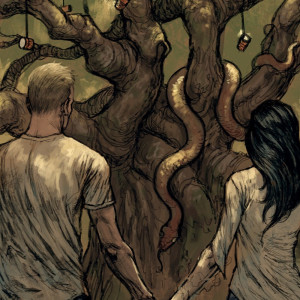THE INVINCIBILITY FABLE
Hello, my name is Arlen Beech and I’m the head writer at Walthers & Sinclair. I wanted to take a moment to explain why something as simple as a book can have a profound impact, especially when it contains all the key elements of a drug presentation. Let’s say that you and I are both veterans of the law enforcement community and we were asked to speak to the local high school students on the topic of addiction. Now, after recanting our most gruesome cases to the crowd and what could befall them if they chose a similar path, would you be surprised if the reception fell kind of flat? Don’t get me wrong we’d get a tear or two and many of the attendees might seem receptive, but a vast majority would leave the auditorium with the same thought in mind, “That was incredibly sad, BUT IT WILL NEVER HAPPEN TO ME.”
This is actually a normal response and is thoroughly documented by psychologists as The Personal Fable and was previously known as the Invincibility Fable. This mental process has its uses as an evolutionary tool and teens are especially prone to its influence. It acts as a pop-up-blocker when you are presented with dangerous situations or when somebody in an authoritative position says, “YOU CAN’T!” In an ideal world that would be the end of it, but we’ve all been that age and nine times out of ten the resulting thought is, “OH, I CAN, AND I WILL.”
Despite this, education is still our most worthwhile defense against the enticement of drugs. By merely changing the intended presentation into a passive form such as a book to be read in the safety of the teen’s own bedroom, safe, away from distraction and at their own pace, a youth will not only accept the information but internalize it. As they read unhindered, somewhere between the point of losing their cares and assigning the characters voices, their mind should perform its primary task which is take information in and create a framework as to how it relates to them and their survival. If this information is entertaining and engages their imagination all the better.
This isn’t just theory, I actually learned this while I was working a two-year stint on a psychiatric transport rig that catered to at risk youth. One night we were waiting in the intake section at the County Mental Health Facility with a seventeen-year-old female who had just completed drug rehab for her second time only to come home and run away two days later to get high with her old boyfriend. When I asked her why she’d been placed on a 5150, she shrugged her shoulders and told me her first trip to rehab had hit her family pretty hard, so her grandparents paid for this stint out of their savings. According to her, this had put her under a ton of pressure which contributed to the most recent relapse. When she finally came back home, she felt terrible but one look from her father’s face and she knew this was going to be bad, so she panicked and threatened to commit suicide.
While I mulled over whether she was trustworthy or not, I began to recite the long-term effects of opioid abuse which drew the attention of the senior psychologist. When she explained the personal fable to me it made perfect sense, what didn’t was why somebody didn’t just take the information and integrate it into a book. The response I received was that the technique would work quite well, but it would be too much effort on the part of the author seeing as there were already dedicated websites that contained the same information.
Here is the problem that we are running into in this day and age. These websites, while containing nearly everything you could want to know about drugs and addiction, their true pearls of wisdom are hidden amongst pages of scientific studies that are as dry as eating a bucket of sand. In short, very few young adults have the attention span to stick with it, let alone internalize it. Because of this, I did the research for them, infusing it with my own hard-won knowledge from my career to develop books like Lesser Gods.
Based on actual events and set in the mid-90’s this nostalgic story follows a teen introvert as he develops his own zany nature versus nurture experiment. Maybe he isn’t as confident or outgoing as he would like, but that might change if he were to become a first responder and simply gave the characteristics a firm nudge. He quickly finds himself in over his head, as the reader follows him on actual 911 calls that cover all the major street and pharmaceutical drugs, behavioral emergencies, and everything in between.
If myself or any of my associates have learned anything as healthcare worker’s it is that teenagers will always be tempted to try certain substances, whether through peer pressure or natural curiosity. That’s why it is our goal at Walthers & Sinclair to offer products that contain a broader picture of the risk they would be taking, not only to augment their decision-making process and resolve, but for your own peace of mind as a parent.





